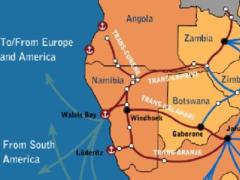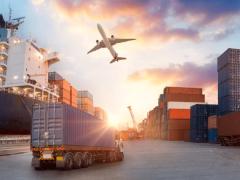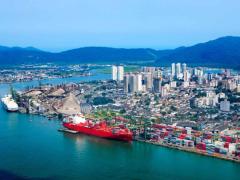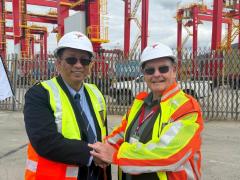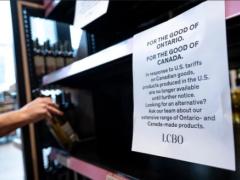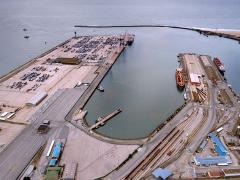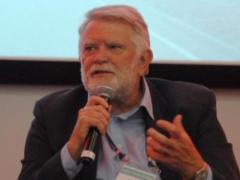Transnet must increase its freight rail handling capacity to 250 million tonnes annually by 2030 – a target that demands an industry overhaul but would not necessarily mean less business for road transporters.Instead, the target – up from the current 160 million tonnes per annum – would lead to the growth of multimodal transport hubs where road and rail optimise efficiencies.This was the view of transport infrastructure specialist Ian Bird, speaking at the Road Freight Association’s 50th Anniversary Conference in the Central Drakensberg in KwaZulu-Natal recently.Bird’s talk outlined the demise of Transnet Freight Rail during the State Capture years under former president Jacob Zuma and the current reforms under way to boost efficiencies.“Transnet at one stage in 2017/18 was pumping. It was moving 226 million tonnes. Everything was moving – big volumes of coal, chrome, copper, micro magnetite, manganese ...The wheels didn’t fall off. The wheels slowed down, and trains didn’t run any more,” he said.Bird said the economy needed growth of between 215 and 230 million tonnes.“Where does the 250 million tonnes come from? Early analysis shows that a lot of the 90 million tonnes will come from general freight. There will be domestic mining, pit-to-port growth, but the bulk will be from general freight which speaks to intermodalism,” he said.He said the formation of the National Logistics Crisis Committee (NLCC) was a critical turning point.The committee has eight critical work streams, with the first focusing on stabilising key supply chains, including coal, chrome, manganese, and container corridors.Among major changes was the opening up of Transnet’s rail network to private operators.Bird encouraged road transport operators to join forces with rail businesses to enter the sector.“Currently, you can do it right now. There are applications being adjudicated ... as we speak,” he said.However, he added that he envisaged there would not be a significant number of operators.“It’s going to be a really tough call to get private train operating companies on the lines. There are limitations in terms of access to rolling stock and locomotives but there are six or seven established train operating companies in the country,” Bird said.“Perhaps we don’t talk about train operating companies. We talk about transport operating companies. We talk about your relationship with customers and the trust customers have, your ability to integrate, to operate in an intermodal environment, your abilities to manage terminals, load goods, off load goods and manage warehouses.“I then pose the question: how do you reimagine yourselves? Restructure yourselves, reinvent yourselves. Because we have a government policy now that says we’ve got to migrate from road to rail.”Bird said the Department of Transport was expected to release the National Rail Master Plan for public comment in the next few months.RailRunner South Africa CEO, Mike Daniel, highlighted the concept of vehicles capable of operating on both road and rail.“Trucking companies – why invest in a rail runner trailer when you can now start investing in vehicles that can travel legally and safely on road and legally and safely on rail? It opens up a huge investment portfolio.”Daniel said research in Roanoke, US, had found that rail infrastructure could grow local economies.“It showed that there was a massive increase in job opportunities by the installation of a multimodal terminal in a particular town. The town grew, the revenues grew, and cargo owners actually moved their factories to that area and enlarged the town. The return on investment was between 20% and 30%,” said Daniel.Multimodal Inland Port Association chairperson, Warwick Lord, said the government’s policy shift towards privatisation had generated opportunities.He said national retailers were feeling current logistics pressures.“A significant supply chain and retail entity, a multinational, sat down with their trucking company and said: ‘We’re going to be growing between 8% and 12% over the next three to five years. How are you going to accommodate our increased cargo needs without adding any more trucks?’.“That was the challenge put out there. Our roads can’t handle too many more trucks. We’re not able to keep adding to the congestion. This was definitely a forward-looking retailer understanding that we have an issue.”Lord said truckers should augment “significant portions” of truck kilometres with rail.“Start thinking about being a transporter instead of a trucker. Why do you have to use your trucking assets when you can augment that with train assets? You can now get higher turnover with the same asset base.”However, few companies were prepared to make the shift.“As trains start becoming more prevalent in the supply chain, understand a train never does the last mile or the first mile, which means every single aspect of a train journey requires at least two truck journeys either side. The benefit is you start doing higher frequency, lower distance trips, which means your horse and trailer sleeps at home, along with your driver,” Lord said.“The rail renaissance is under way ... I urge you to be part of the solution,” he said. LC


